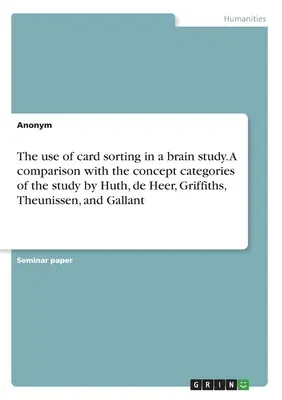Seminar paper from the year 2018 in the subject Psychology - Cognition,
grade: 1,0, University of Twente (Behavioural, Management and Social
Sciences), language: English, abstract: The current study tested whether
humans consciously group words into clusters in the same way as the
results of an fMRI study suggest. Doing this, it is referred to the
study by Huth, de Heer, Griffiths, Theunissen, and Gallant in which
increased brain activity in certain areas was detected while people
listened to certain words. Based on these brain areas, the words could
be categorized. For the current study 50 of these words were selected
and used to perform an open card sorting and a questionnaire. The sample
comprised 17 participants. Using a chi-squared test, the relationship
between the categorization in the card sorting and in the study was
analysed, as was the relationship between the two specific categories
violence and time using a parametric test for independent samples. With
regard to the analysis of the questionnaire, t-tests were used to
compare categories with each other and with filler words. The results of
the card sorting revealed a significant relationship between clusters in
the card sorting and the categories of the study. In addition, the
categories violence and time were found to be significantly different,
while increased proximity values occurred within the categories. The
questionnaire showed that concepts were more closely related to the
categories they originate, compared to filler items, and that concepts
within the category time were rated as better fitting than concepts
within the category violence. The results of the current study suggest
that humans indeed consciously categorise concepts in a similar way as
the brain activation implies. Words within those categories are related
to each other and clearly distinguishable from words in other
categories.


